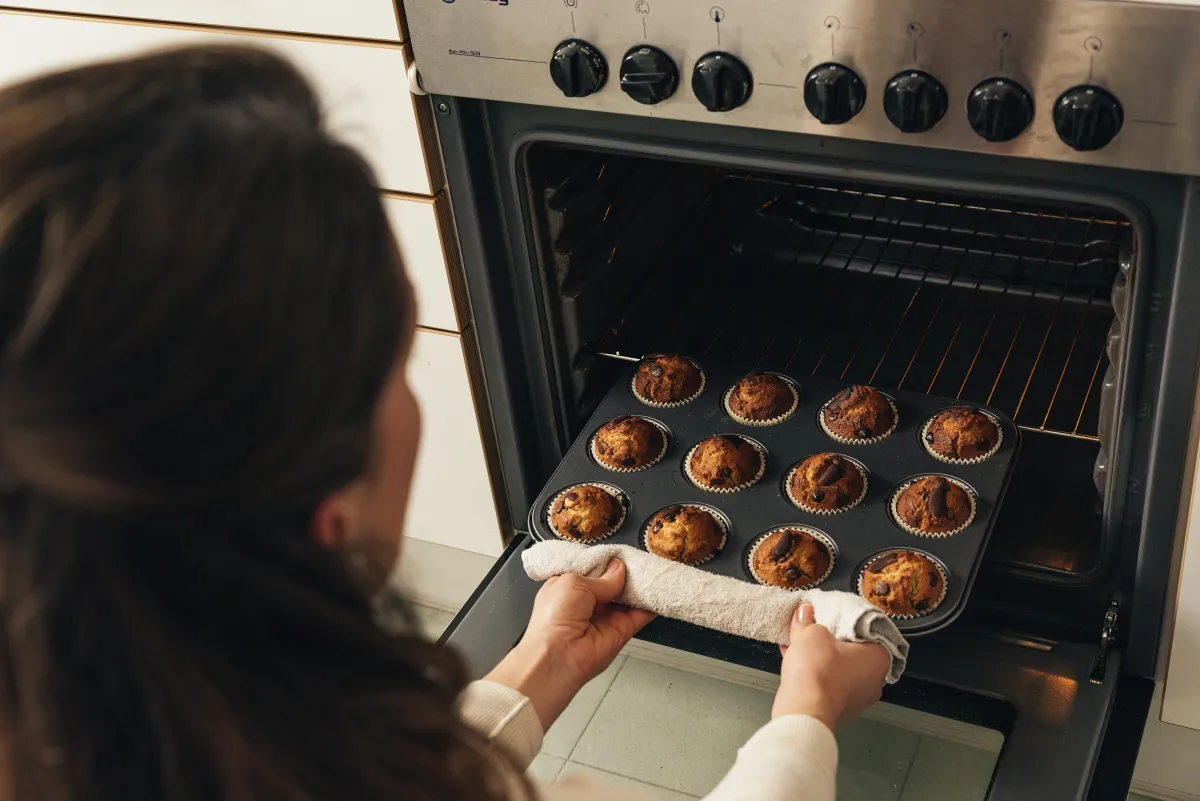Gas Oven Repair: Safety Checklist & Fixes for a Non-Heating Oven

Hey there, homeowner! If your gas oven isn’t heating up, you’re probably frustrated, staring at a cold kitchen and wondering what went wrong. Don’t worry, we’ve got you covered with a straightforward guide to troubleshoot and fix your gas oven, plus a safety checklist to keep things secure. Let’s walk through the common reasons your gas oven might not be heating, how to safely check for issues, and when it’s time to call in the pros.
Table of Contents:
• Why Your Gas Oven Isn’t Heating: Top Causes
• Safety Checklist Before You Start
• Step-by-Step Fixes for Your Gas Oven
• When to Call a Professional for Oven Repair
• Preventative Maintenance Tips
• Get Your Oven Back to Baking
• Frequently Asked Questions About Gas Oven Repair
Why Your Gas Oven Isn’t Heating: Top Causes
Gas ovens are complex, relying on both gas and electrical components to function. When something goes wrong, it could be due to a few common culprits. Here’s what might be happening:
• Faulty Igniter: The igniter is the hero that sparks the gas to create heat. If it’s weak, doesn’t glow bright orange, or is broken, your oven won’t light. You might even smell a bit of gas if it’s trying but failing to ignite.
• Gas Supply Issues: If the gas isn’t flowing, your oven can’t heat. This could be due to a closed valve, a kink in the gas line, or even a home-wide gas supply issue.
• Tripped Circuit Breaker: Gas ovens need electricity for timers, igniters, and controls. A tripped breaker can stop everything in its tracks.
• Thermostat or Temperature Sensor Problems: A faulty thermostat or sensor can misread temperatures, causing the oven to shut off prematurely or not heat at all.
• Safety Gas Valve Failure: This critical component ensures gas only flows when the igniter is ready. If it’s malfunctioning, no gas means no heat.
• Control Board or Wiring Issues: The control board is the brain of your oven. Damaged wires or a faulty board can disrupt the heating process.
Safety Checklist Before You Start
Turn Off the Gas Supply: Locate the gas valve behind your oven or the main shutoff valve for your home (usually near the gas meter, often low to the ground with dials or a digital display). Turn it perpendicular to the pipe to shut it off. If you smell gas, open windows, leave the house, and call your gas supplier immediately.
Unplug the Oven: Disconnect the oven from its electrical outlet to avoid shocks. If it’s hardwired, flip the circuit breaker to the OFF position.
Ensure Ventilation: Open windows and doors to disperse any potential gas buildup.
Keep a Fire Extinguisher Handy: Have one nearby in case of unexpected issues.
Check for Gas Leaks: A brief whiff of gas when starting the oven is normal, but a persistent or strong smell is a red flag. Stop and call a professional if this happens.
Step-by-Step Fixes for Your Gas Oven
Now, let’s get to troubleshooting. Start with the simple stuff and move to more advanced checks if needed.
1. Check the Circuit Breaker
Gas ovens need power for their igniters and controls. A tripped breaker could be the issue, especially if your oven shares a 15 or 20-amp circuit with other kitchen appliances.
How to Fix: Head to your home’s electrical panel. Find the breaker labeled for your oven (or kitchen appliances). Flip it to OFF, wait a moment, then back to ON. Test the oven. If it still doesn’t work, move on.
2. Verify the Gas Supply
No gas, no heat. A closed valve or disrupted supply could be the problem, especially after home projects or moves.
How to Fix: Check the main gas valve (near the meter) and the oven’s dedicated valve (often behind the oven). Ensure they’re parallel to the pipe (ON position). If you have a gas range, test a burner; if it lights, gas is flowing to the unit. If no burners work, check other gas appliances (like a dryer). If your home is without gas, contact your gas supplier.
3. Inspect the Service Cut-Off Valve
Many gas ranges have a service cut-off valve on the pressure regulator at the back, which can stop gas flow to the oven but not the burners.
How to Fix: Pull the oven out slightly (check for slack in the yellow/black gas line). Look for a red valve or dial, often below the burners. Ensure it’s set to “open.” If it was off (possibly from recent service), turn it on and test the oven.
4. Test the Igniter
The igniter is the most common failure point. If it doesn’t glow bright orange or is broken, the gas won’t ignite.
How to Fix: Unplug the oven and turn off the gas. Remove the oven racks and bottom panel to access the igniter (a metal coil near the burner). Turn the oven on (with power restored) and watch does it glows bright orange? If not, or if it’s discolored/damaged, use a multimeter to check resistance (should be 10-2,500 ohms for glow-bar igniters). If it’s faulty, order a replacement for your oven’s make/model (e.g., Samsung oven repair parts). Replacing it involves unscrewing and rewiring, but if you’re not confident, call a pro.
5. Check the Temperature Sensor
A faulty sensor can cause the oven to shut off prematurely, leading to uneven or no heating.
How to Fix: Locate the sensor (a thin metal rod near the door frame or back wall). Use a multimeter to check resistance (shouldn’t be zero or near zero). If faulty, replacement is needed; best left to a technician due to wiring complexity. You can also test oven temperature with an oven-safe thermometer at 350°F; a big discrepancy suggests a sensor issue.
6. Examine the Safety Gas Valve
The safety valve ensures gas only flows when the igniter is hot enough. If it’s faulty, the oven won’t heat.
How to Fix: This is tricky and involves gas lines, so we recommend a professional. If you’re experienced, unplug the oven, locate the valve (a metal box near the burner), and test for continuity with a multimeter (should be less than 5 ohms). No continuity means it needs replacing, but improper handling risks leaks or fires.
7. Inspect Wiring and Control Board
A damaged control board or wiring can disrupt the oven’s functions.
How to Fix: Access the control panel (check your manual for instructions). Look for burnt, loose, or frayed wires. Test resistance through the ignition circuit (should match the igniter’s 10-2,500 ohms). If the board is faulty, a professional should replace it to avoid further damage.
When to Call a Professional for Oven Repair
If you’ve tried the above and your oven still won’t heat, or if you’re uneasy about gas or electrical work, it’s time to call Common Appliance Repair. Gas ovens involve safety risks; faulty repairs can lead to leaks, fires, or electrical hazards. Our expert technicians in North Grafton, and the Boston areas are trained to handle gas oven repair, including Samsung models, with precision. We offer same-day service, transparent pricing, and a warranty on our work.
Preventative Maintenance Tips
Keep your gas oven in top shape with these tips:
Clean Regularly: Remove grease and debris from burners, igniters, and the oven interior to prevent clogs.
Check Door Seals: Ensure gaskets are intact to maintain heat and prevent gas issues.
Test Thermostat Accuracy: Periodically check with an oven thermometer to catch sensor issues early.
Inspect Gas Lines: Look for kinks or damage during routine checks.
Schedule Annual Maintenance: A pro can inspect critical components like the safety valve and igniter.
Get Your Oven Back to Baking
A gas oven that’s not heating can throw a wrench in your cooking plans, but with this guide, you’re equipped to troubleshoot safely. Start with simple checks like the breaker and gas supply, then move to the igniter or sensor if needed.
For complex issues or gas-related repairs, trust Common Appliance Repair in North Grafton, and the surrounding Boston areas. Call us at +1 (857)-300-7744 or book online for fast, reliable gas oven repair service. Let’s get your kitchen warm and your meals cooking again!
Still Have Questions?
Frequently Asked Questions About Gas Oven Repair
Find answers to common questions below, or reach out if you need more information.
Why is my gas oven not heating, but the stove burners work?
If the burners light but the oven doesn’t heat, the issue is likely a faulty oven igniter or safety gas valve. These components are specific to the oven and don’t affect the stovetop. Our technicians at Common Appliance Repair can test and replace them for you.
Can I manually light my gas oven if it’s not heating?
Modern gas ovens, including Samsung models, rely on electronic igniters for safety. Manual lighting is not recommended and can be dangerous. For safe gas oven repair, contact our team in North Grafton for professional help.
How do I know if my gas oven igniter needs replacing?
If the igniter doesn’t glow bright orange or shows no continuity (10-2,500 ohms) when tested with a multimeter, it’s likely faulty. For expert gas oven repair near me, our technicians can replace it quickly and safely.
Why does my gas oven smell like gas when I try to use it?
A brief gas smell is normal when starting, but a persistent odor could indicate a faulty igniter or safety valve failing to ignite the gas. Stop using the oven, ventilate the area, and call Common Appliance Repair for immediate gas oven repair service.
Is it worth repairing my gas oven, or should I replace it?
If repair costs are less than 50% of a new oven’s price and it’s under 10 years old, repair is often worthwhile. Our team can assess your oven (including Samsung oven repair) and provide an honest recommendation for repair or replacement.
You are looking for Appliance Repair Near Me in Boston ?
Don't wait, call our technician and we will fix your appliances as soon as possible!

